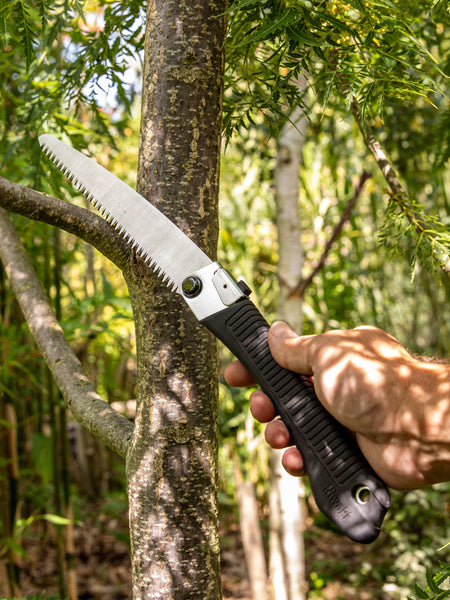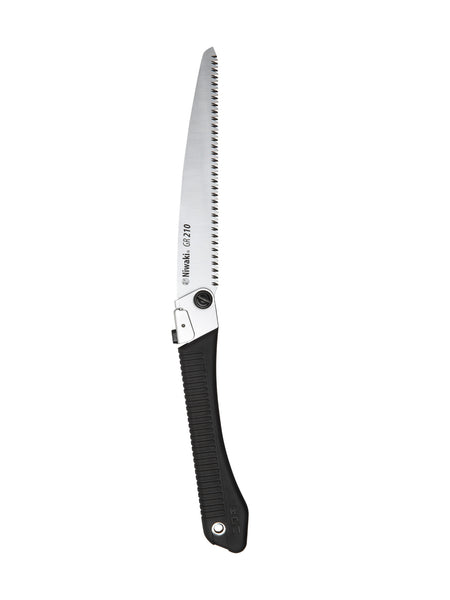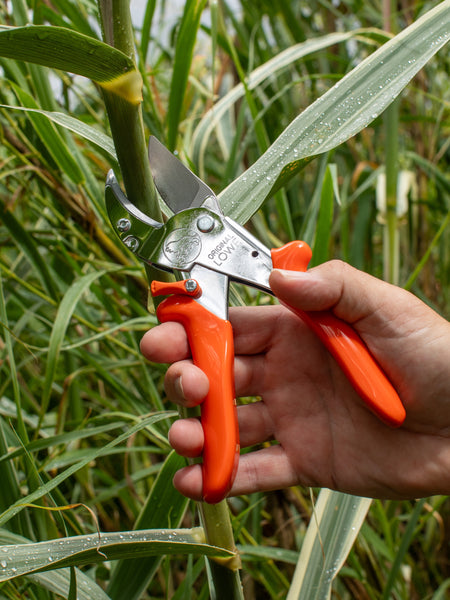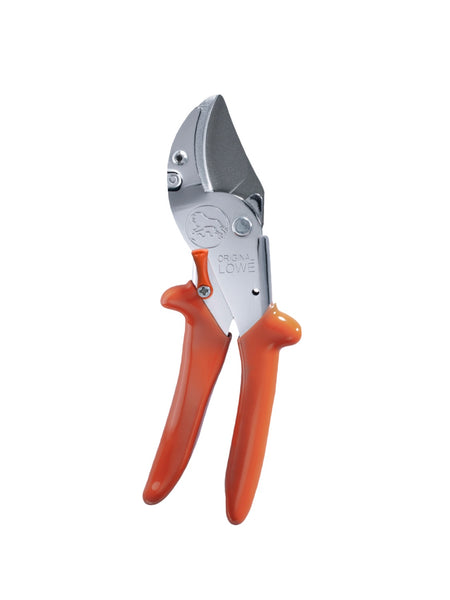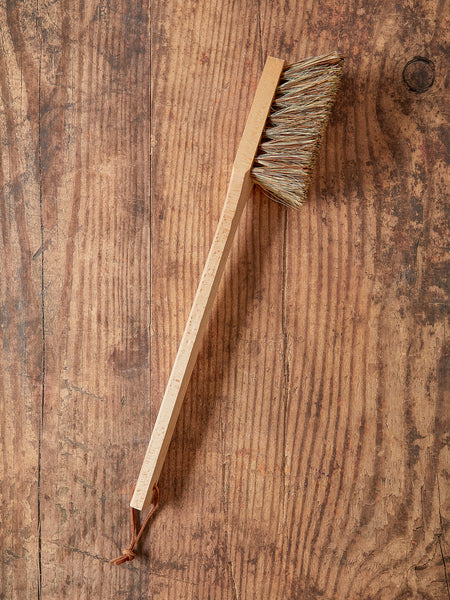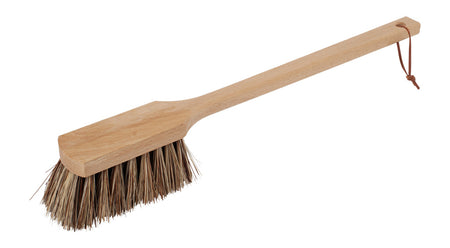February is as cunning as a weasel and as sly as a fox. Everywhere one looks, there are tantalising signs of life. Swelling buds, shy flowers and self-sown seedlings hint at the excitement and abundance ahead.
From the beginning to the end of February, we gain two extra hours of daylight: I have even been known to catch the sun on bright days. Enjoy these precious moments, but don’t let your guard down. February plays cruel tricks on over-optimistic gardeners, building hopes with a few warm, sunny days only to dash them with an icy blast. Snow and frost aren’t so much a threat as a certainty. Proceed with caution, and don’t be in too great a hurry to start sowing and growing. Unless you’re one of the lucky souls with a heated greenhouse or sunny conservatory, sit on your seedbox and wait patiently until March or April.
In the UK, February is a month of seed swaps, potato days, alpine plant shows and the first plant fairs of the year. These often feature snowdrops, the modern-day equivalent of the tulip, changing hands for high prices. Seed swaps are an excellent way to try your hand at growing new plants without significant outlay and a good opportunity to meet other keen gardeners. February is also the perfect month to repair or replace worn-out garden tools. To find out where Dan Cooper Garden will pop up this month, visit my Events Page.

What to do this month
It's still winter, and unless bad weather is forecast, nothing needs to be tackled urgently. Ease yourself gently into the new gardening year with a manageable list of tasks and save your energy for March. If you are eager to get going, here are a few things you might like to start on.
Enjoy the first flowers of spring
Look hard enough, and you’ll notice flowers appearing in your garden like stars at twilight. You may need to squint and strain initially, but they’ll soon emerge. Winter flowers are often small and downward-facing, so be prepared to appreciate them on your hands and knees. Alternatively, lift potted plants onto walls, steps and tables for a better view.
Many winter flowers are richly scented, an invisible magnet attracting pollinators from far and wide. If you can spare a few branches of Christmas box (Sarcococca), wintersweet (Chimonanthus praecox) or winter-flowering honeysuckle (Lonicera fragrantissima), cut them and bring them indoors where their perfume will be even more intoxicating. Chief among February flowers are hellebores, aconites and snowdrops, but watch for witch hazels, euphorbias, paperbush (Edgeworthia chrysantha), mahonia, camellias, heathers and the very first daffodils. For more seasonal colour, check out my top ten shrubs to banish the winter blues.

Tread carefully
If your garden is temporarily flooded or waterlogged, avoid stepping on borders and lawns until the excess water drains. When wet, soil is easily compacted, squeezing out oxygen and compromising its structure. This can make digging difficult and make it hard for plants to establish. Compacted soils can also be difficult and time-consuming to aerate, so it’s best to avoid the situation in the first place. If you must walk on wet ground, lay down wood planks to get you from A to B.
If it hasn't rained for a few days, check on plants growing in pots and containers to ensure they're not drying out. Water them if necessary. This will also protect the plants from frost damage, as damp compost freezes more slowly than dry.

Finish winter pruning
Grapevines, autumn-fruiting raspberries, blackcurrants, apples, pears, figs, wisteria, roses and clematis will benefit from a reduction in their upper quarters before growth resumes in spring. To find out more, read my Simple Winter Pruning guide. After pruning, apply a slow-release fertiliser and mulch generously around the base of every plant.
Trim evergreen climbers such as ivy (Hedera) and star jasmine (Tracheospermum jasminoides) before birds start searching for new nesting sites. I use secateurs to carefully prune away unwanted growth, rather than shears that leave unsightly cuts through the foliage. Wear gloves, especially when handling star jasmine, to protect your hands from irritant sap.

Have a gentle tidy
You can begin to cut down ornamental grasses as soon as they look tired and weatherbeaten. Trimming will open up the clumps, allowing new growth to emerge unhindered. The same applies to any flowering perennials you’ve left for decorative effect. You can clear epimediums and evergreen ferns of last year’s foliage before new growth begins - save this job for the end of the month. A pair of shears will make the job quicker and easier if you have large areas of planting to contend with.

Get ready to grow
You can start preparing seed beds for sowing and planting. Frosty weather should have broken down the largest clods of earth, leaving a surface ready for cultivation. Weed thoroughly, rake and cover with compost or a permeable membrane until you are ready to begin.
Potatoes are a brilliant vegetable crop if you have plenty of space. As food prices have risen, so has the cost of humble spuds, making them well worth the investment. They’re no trouble to grow and great for breaking up heavy soil. The range of varieties is immense, and, chosen carefully, four or five different ones can keep you in tasty tubers for eight months or more. Start early potatoes into growth (a process known as ‘chitting’) by standing them in old egg cartons and letting them sprout in a bright, unheated room. They can be planted outside in tubs or trenches starting in late March. You can find out more in my guide to chitting potatoes.
If the weather is fine, and the ground isn’t frozen or waterlogged, it’s possible to move shrubs and divide perennials now. February is also perfect for planting bare-rooted shrubs and trees, including roses and fruit bushes. Find out why I think bare-rooted plants are the way forward here.

Sow with caution
If you have a heated greenhouse or propagator, you can start sowing seeds of crops that require a long growing season. These include sweet peppers, chillies and tomatoes. The seeds will germinate quickly and grow fast, so be sure you can keep them somewhere warm and brightly lit until it's safe to plant them outside in May. If, like me, you don’t have a heated space, wait until mid-March or early April and save yourself the heartache of having to start again when your seedlings get too tall and flop over. If you have a cold frame or unheated greenhouse, you can sow sweet peas, but beware of hungry mice that love scoffing any pea or bean seed. Set humane traps if you anticipate tiny visitors.

Take care of wildlife
Natural food becomes scarce this month, so if you put out feed for wild birds, they should flock to your garden. As well as food, they will appreciate a source of clean water, especially on days when ponds and birdbaths are frozen. For more advice, take a look at my guide to simple winter bird care.
Now is the time to mount new bird boxes on trees and walls. Position them at least 1.5m – 2m above ground on a tree, wall, post or fence beyond the reach of cats and other predators. The ideal aspect for a bird box is east, north, northeast or southeast. Good positioning helps to shelter the birds from rain and intense sunlight. You can clean existing bird boxes by removing debris with a stiff brush and disinfecting the interior. If you feel generous, pop some natural wool inside to help the new residents create a cosy nest for their brood.


